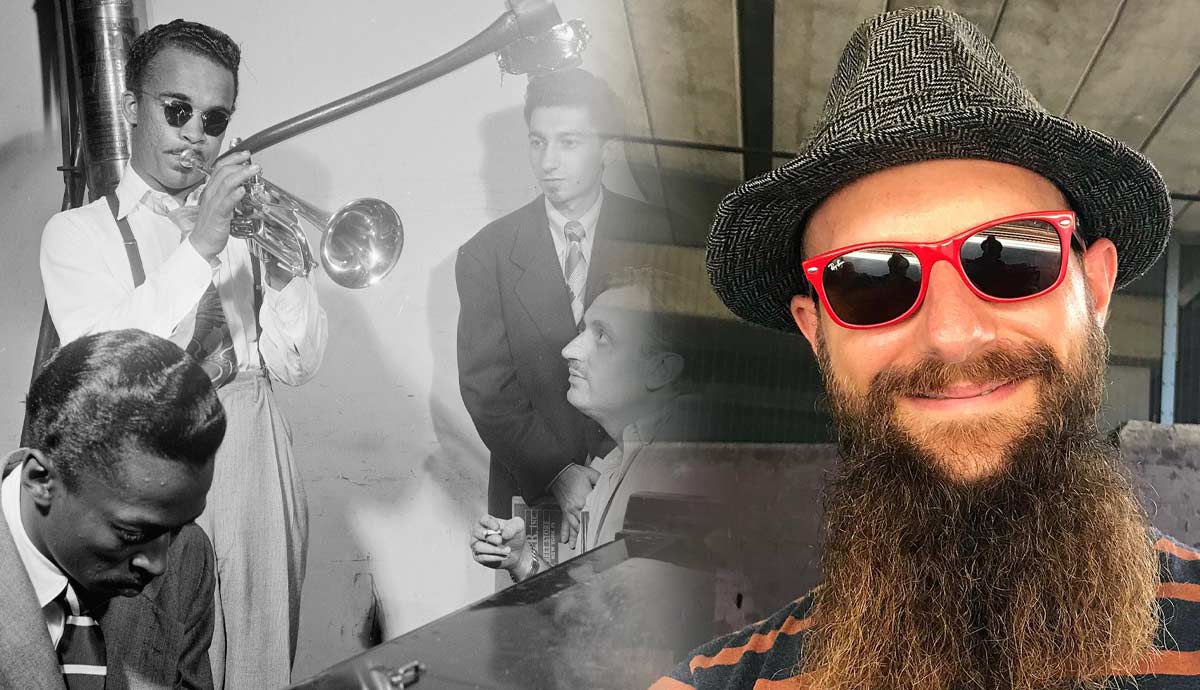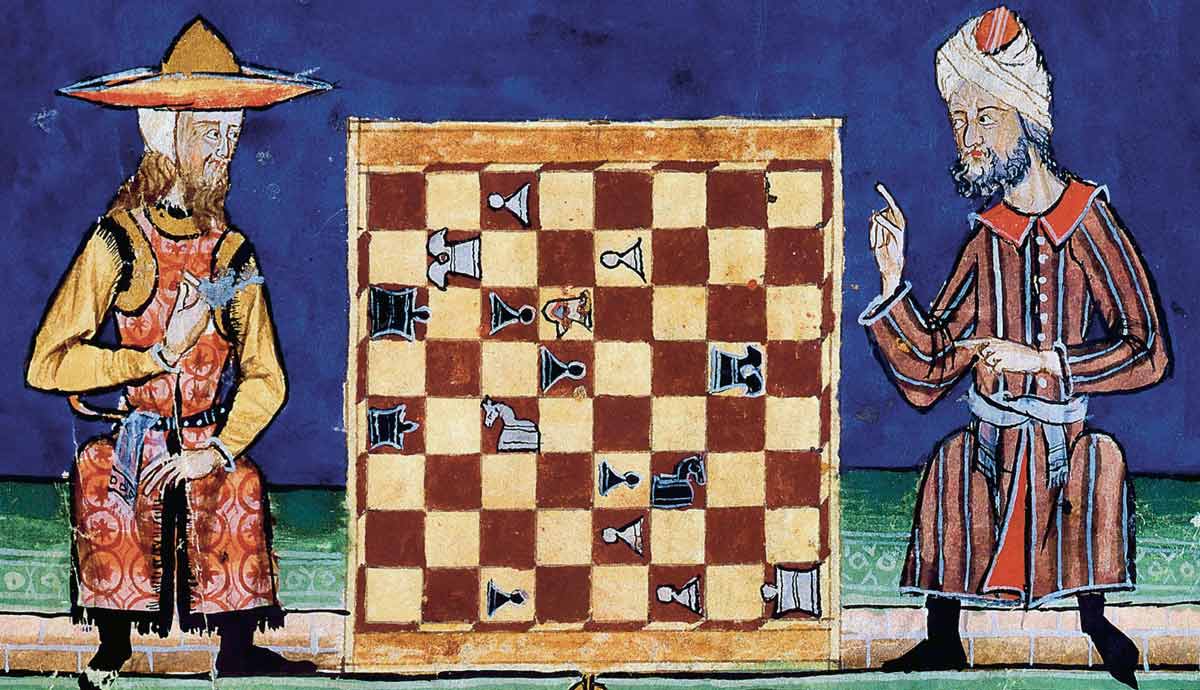
The term “hipster” is elusive and frequently wielded as an insult, yet it has a rich history. The first hipsters were young Black jazz aficionados in 1940s Harlem. Their hipster culture was appropriated in the 1950s by young middle-class whites of the Beat Generation. By the late 1990s, “hipster” had acquired almost wholly negative connotations, describing affluent, coffee-drinking middle-class whites living in gentrified urban neighborhoods.
From its roots in the Harlem jazz scene to the Beat Generation and its contemporary manifestations, the trajectory of hipster culture underscores a wider shift from a radical revolt against the mainstream to the triumph of consumer culture.
The Original Harlem Hipsters

Following the peak of jazz during the 1920s and 1930s, 1940s Harlem witnessed the birth of the Bebop Revolution. Often known simply as “bop,” this new avant-garde form of jazz was characterized by virtuosic technique, rapid tempos, and advanced melodies, harmonies, and chord progressions. Unlike its previous iterations, bebop was the first style of jazz to distance itself from the lure of mass appeal, catering instead to a niche audience of fellow musicians.
Many pioneers of bebop honed their craft in the big bands of the swing era. The great John Birks “Dizzy” Gillespie (1917-1993) played trumpet for Cab Calloway; Charlie “Bird” Parker (1920-1955), the unquestioned genius of modern jazz, found his feet in Jay McShann’s band; Charlie Christian, jazz guitar revolutionary, played for Benny Goodman “The King of Swing.”
Bop symbolized a rejection of the vapid caricatures of Black minstrelsy and “jazz hands” showmanship of the commercial big bands. It stood as a musical revolt against the mainstream: against the big bands, the arrangers, vertical harmonies, soggy rhythms — and commercial music in general.
Moreover, bebop carried distinct political undertones. Fueled by a desire to protect their artistry from white appropriation, the likes of Parker, Gillespie, and Thelonius Monk (1917-1982), openly spoke of crafting music so difficult that “they” (whites) “would not be able to steal it.”
For Langston Hughes, the essence of bebop stemmed from the oppressive sound of violence. Every time that a cop hits a black man over the head with a billy club, it makes the same sound: “BOP! BOP!… BE-BOP!…MOP!…BOP!” Bebop was: “beaten right out some Negro’s head into them horns and saxophones and piano keys that plays it.”

Bebop was invented in the late-night jam sessions held in the upstairs rooms of Minton’s Playhouse and Monroe’s Uptown House in Harlem, New York City. Monday night jams at Minton’s, with their “cutting sessions” (musical battles) between soloists, played a key role in the evolution from swing to bebop. The essence of this new jazz was thus deeply emotional music, expressionist, not abstract.
However, it was not to everyone’s taste. Some thought bop to be unlistenable. Many of the “traditional” luminaries of jazz were less than impressed. Cab Calloway dismissed bebop as “Chinese music,” while Louis Armstrong lamented the “weird chords” of the style and criticized the boppers as “ young cats [that] want to carve everyone else because they’re full of malice.” Their desire to show up and upstage their predecessors was deeply offensive to the old guard. In response, the boppers dubbed their opponents “moldy figs.”

In contrast to the polished, professional image of the big band and swing players, the bebop players embraced a more laid-back lifestyle, indulged in drugs such as cannabis and heroin, and adopted liberal attitudes towards sex. As “hepcats” or later “hipsters” they forged their own subculture in which language—“jive talk”—played a pivotal role both as a means of cultural expression and insider communication.
Dressed in their trademark zoot suits, and adopting the beret, goatee, and horn-rimmed glasses combination popularized by Dizzy Gillespie, boppers projected an aura of intellectual sophistication and laid-back bohemianism. Bop embraced an ironic detachment from mainstream jazz culture, favoring what came to be known as a “hipster” attitude towards the “preponderance of squares and bad music.”
Despite never attaining the commercial success of the swing era, bebop reshaped jazz into a form of art music, more akin to Western classical music than the popular music of the masses. Nevertheless, the subculture behind it—characterized by a distinct language, fashion, and lifestyle—exerted a profound influence on subsequent waves of American—and global—“hipster” culture.
Hipsters of the Beat Generation

Bebop, with its distinct subculture, emerged as a reflection of Black experience. Nonetheless, it was soon co-opted by young middle-class whites. The Beat Generation—epitomized by writers such as Jack Kerouac, William S. Burroughs, and Allen Ginsberg—were profoundly influenced by the spirit of bebop. They frequented New York jazz clubs and used bop talk such as “square,” “cats,” and “dig” in their writings. Jazz became the central point of reference in their universe.
The term “Beatnik” was coined in 1958 by San Francisco Chronicle journalist Herb Caen to describe members of a burgeoning movement that influenced many aspects of American culture, from art, literature, and music, to fashion and language. The movement influenced many of the biggest artists and figures of the day, including Andy Warhol, Bob Dylan, and The Beatles.
Naturally, the use of the Russian suffix “-nik” carried derogatory connotations at the height of Cold War America. Yet the Beat Generation constituted a social and cultural movement rather than a political one. They espoused anti-conservative and anti-materialist views but had no significant ties to communism, or for that matter, any other political movement of note.

In his 1957 essay The White Negro, Norman Mailer, a white middle-class Jew, labeled the Beat Generation and their followers “hipsters.” The crux of Mailer’s piece was to draw parallels between the existential angst of the white American “hipster” and the everyday struggles of the American “negro” — both, he asserted, inhabited worlds fraught with danger, violence, and conflict.
Like the boppers, under the constant threat of (in this case existential) death, the beats sought to detach themselves from conventional society and focus on the present moment. Emulating what they saw to be the carefree, cool lifestyle of the “negro” hipsters, the Beat Generation sought above all, to spur the social norms and the values of conservative white America, to chase “Saturday night kicks and the obligatory pleasures of the body” (Mailer, 1957).
Beatnik Culture

While jazz provided the soundtrack to the Beat Generation various other influences were also significant. In particular, eastern religion was mobilized as a means to challenge the conservative norms and values of middle-class society. Philosophically, beatniks prioritized inner growth over material possessions and worldly pursuits.
The Zen Buddhist teachings of D.T Suzuki were deeply influential. Allen Ginsberg’s spiritual journey took him to India in 1963, after which he began integrating Hindu rhythmic mantras into his poetry. In 1958, Jack Kerouac published The Dharma Bums, a semi-autobiographical attempt to contextualize the contradictions of his life within a “Buddhist context.”
The Beats’ eclectic mix of Western Buddhism and jazz led James Baldwin to dub them the “the Suzuki rhythm boys.” More seriously, Baldwin (1961) accused Jack Kerouac in particular of presenting an image of the “happy smiling negro” within his work, which in the pre-civil rights era was emphatically untrue.
The Beatnik emulation of bop culture was highly romanticized and at worst perpetuated the dangerous white myth of black hyper-sexuality to appear “hip.” Nonetheless, for Kerouac and his contemporaries, “beat” signified “beatitude, not beat up” and a cool sense that transcendence could be found in the spirit of the new jazz.
Accordingly, the Beat Generation gave birth to the figure of the white middle-class hipster, dressed in beret and Dizzy Gillespie glasses, and nestled in the bohemian enclaves of San Francisco and the lower East side of New York City. The stereotypical hipster spent their time in coffee shops, bookstores, and bars, reading poetry and talking philosophy; they “made art, smoked dope, dug the new jazz, and spoke a bastardization of the black argot.” (Di Prima, 1969).
Contemporary Hipster Culture

The contemporary hipster refers to a late-1990s subcultural figure that first rose to public attention in select gentrified enclaves of major global cities. Brooklyn and the lower East Side of New York, Seattle’s Capitol Hill, San Francisco, Sydney, Cape Town, and East London. Today the hipster lives in all these places and more. The hipster trend is global.
The defining marker of contemporary hipster culture is fashion. The archetypal hipster male sports a beard or ironic mustache, flannel shirts, skinny jeans, and rides a fixed-gear bike. His female counterpart has retro tattoos and a top-knot hairstyle and wears vintage clothes with Converse shoes. These figures appreciate vinyl records, vegan food, slick digital design, artisanal coffee, and mid-century Scandinavian modernism.
Interestingly, unlike their hipster predecessors, there is no discernable soundtrack to contemporary hipsterdom. Instead, obscure noughties indie bands, 1980s electro and synth-pop, minimalist techno, IDM, and hip-hop artists all contribute to the scene.
Yet, a notable similarity persists across time: the value placed on insider knowledge. Just as the Harlem hipster prized the advanced knowledge of bebop, and beatniks turned their noses up at the “square” unenlightened commercial culture of white America, contemporary hipsters take pride in being ahead of the curve and “knowing about exclusive things before anyone else” (Greif, 2010).

Hipster culture is about taste, fashion, and being in the know. But like any cultural form, it has a material base. In coffee shops, record stores, bicycle repair shops, bars, etc. within gentrified enclaves of major cities and beyond.
Most importantly, hipster culture is intertwined with the material structures that define the global economy. In line with the “neoliberal” turn of the 1980s and the newfound primacy of the individual consumer, contemporary hipster culture is connected above all to an ethos of consumption. Within a global economy that “specializes in the niched mass production of consumer goods that cater to the needs of small, subcultural groups” (Maly & Varis, 2015) hipsterdom becomes primarily about rejection of mainstream “taste.”
For instance, within the popular imagination, hipsters are associated with their taste in coffee and where they drink it. They drink their (expensive) flat whites under industrial lighting, surrounded by wi-fi, white walls, and stripped-back floors. The branding of the coffee shop is low-key and features nice fonts. Young “hip” people sit on vintage or repurposed furniture on laptops. A sense of authenticity and nostalgia mingles with the modern digital economy. The hipster coffee shop looks suspiciously similar to all the other coffee shops of its kind.
The contemporary hipster has morphed into what Thomas Frank (1997) calls the “rebel consumer” — the target subject of the synthesis of business culture and counterculture, where the imagery of youthful rebellion is mobilized to market corporate products.
The contemporary hipster is degrees from the pursuits of avant-garde jazz and beatnik existentialism, focusing instead on the value of entrepreneurial start-up culture, and its potential to disrupt the mainstream. Their interests encompass craft beer, limited edition drops of trainers, and cryptocurrency. Shorn of the countercultural elements of previous generations of hipsters, contemporary hipster culture is in the last instance about niche consumer taste.










